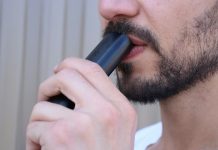It’s unavoidable to face stressful situations in your daily life. It can be from your job, school, household chores, or even minor annoyances like traffic jams or overcooked breakfast. Regardless of your stress root cause, it can bring different responses to your body. Your heart beats faster, your muscles might tense up, your breathing tends to speed up, and some may experience other physical symptoms like headaches and fatigue.

Thus, each of you needs to learn about different relaxation techniques to reduce stress and cope up with anxiety. Being able to control your stress levels can bring you advantages such as being in control of your emotions, reactions, moods and put you in a calmer and clearer state of mind. Moreover, reducing stress is also beneficial for your well-being, such as better sleep, higher energy levels, and boost moods.
The right relaxation technique must match your lifestyle and your body’s natural response. To learn more, check out these five effective relaxation techniques to reduce stress and see which one best suits your needs.
Hypnotherapy

Hypnosis is often misunderstood by many. Some people perceive hypnosis as a magic trick wherein you magically make someone go to sleep or influence people to do something by saying a magic word. But the truth is, hypnosis is a psychological treatment and a therapeutic tool that you can use to manage stress, cope up with anxiety, and overcome fears in your daily life.
You can avail yourself of hypnotherapy in which a professional physician or psychologist will hypnotize you in every session and help you achieve the goals you made for yourself. You also have the option to try and learn to hypnotize yourself by using your thoughts or your voice to put you in a relaxed state or influence yourself to make your lifestyle change when necessary. This practice is also known as self-hypnosis.
Deep Breathing Exercise

Another popular and still effective form of relaxation technique is the deep breathing exercise. It’s very easy to learn, and you can practice this everywhere – in your workplace, office, at home, or wherever you find yourself sitting and wanting to reduce those stress levels. There are also audio downloads and cellphone apps created to guide you in your deep breathing process, especially if you’re a beginner.
To make it easier for you, here’s a short and quick guide on how to practice deep breathing:
- Find a spot to sit warmly and quietly with a straight posture.
- Lay one hand on your abdomen and the other one on your chest.
- When you inhale, breathe through your nose. Then, exhale through your mouth.
- Continue doing this slowly for at least 5-10 minutes until you finally feel relaxed and composed.
- If you find it hard to breathe from your stomach while in a sitting position, you can try to lie down if possible.
Self-Massage
Everyone knows how getting a massage at a health club or spa can bring numerous benefits for your health, mood, body pains, and stress. Some people even consider a massage appointment as a luxurious way to treat yourself after an exhausting week. But aside from these professional massages, you can still enjoy the same benefits if you try to practice self-massage.
Use a few minutes of your day to massage yourself in your office between tasks, or at home after a busy day, or in bed as part of your night routine. For better relaxation effects, you can use a scented lotion or an aromatic oil to massage yourself. Then, combine it with deep breathing exercises for an enhanced experience.
Mindfulness Meditation
It’s a no-brainer that mindfulness meditation is very effective when it comes to alleviating stress and anxiety. This technique involves doing a comfortable sitting position, concentrating on your breathing, and redirecting your mind’s attention to the present moment. This practice enables you to focus on what’s happening now and stop dwelling on past issues or worrying about future events.
Mindfulness meditation is also known to help people reduce negative emotions like depression. When you constantly remind yourself to stay put here, in the present, you’re training your mind to get rid of any regrets and worries which may be the root cause of your stress. However, be reminded that this technique may require some practice before getting used to the habit. You can use an app to help you concentrate as you practice mindfulness meditation for the first time.
Visualization

Visualization, otherwise known as guided imagery, is a type of relaxation technique that involves using imaginary sceneries, places, or experiences that make you feel relaxed and calm. You’re free to choose any setting that makes you relax, such as the mountains, a tropical beach, a wooded glen, or a childhood spot you used to visit years ago.
You can practice this method on your own or download free apps to help you through your visualization. You can also do your visualization by listening to soothing music or doing it in total silence. Visualization can work best when you use as many sensory details such as seeing the sun, hearing the chirping birds, feeling the sand in your feet, tasting the rainfall, or smelling the flowers.
Finishing Thoughts
Finding the right relaxation technique for your body and lifestyle may take numerous attempts and practices. But still, don’t stop figuring out which technique suits you best. Remember, these relaxation techniques were discovered to help you alleviate stress and anxiety. Also, these helps improve your overall health and work-life balance.









































